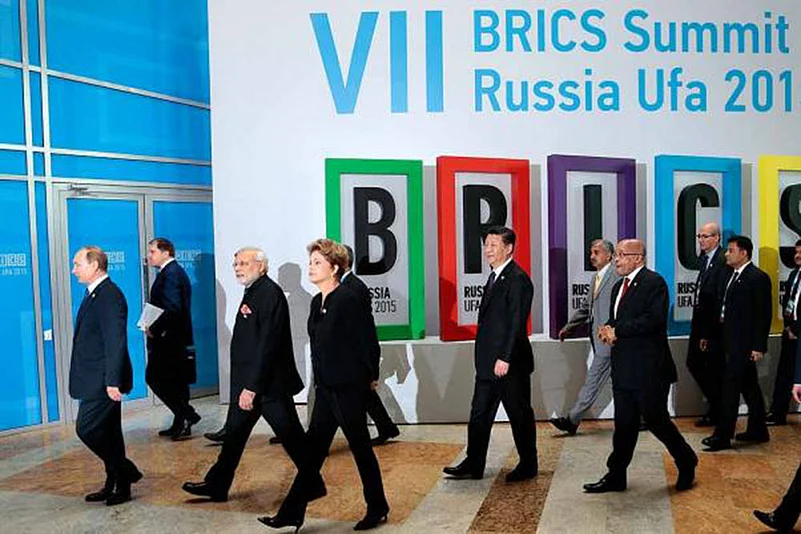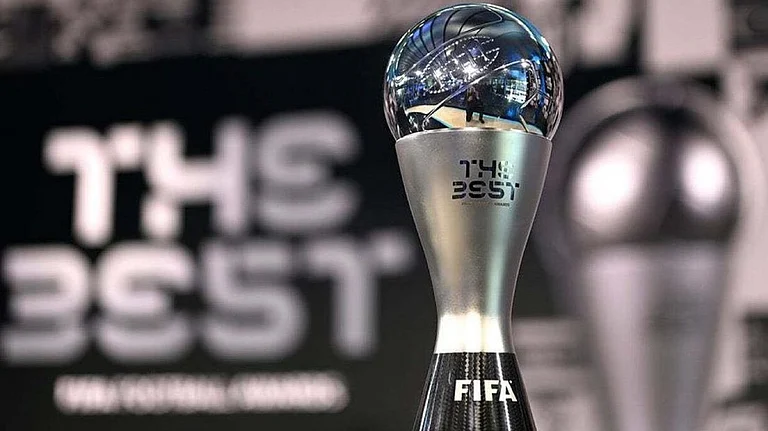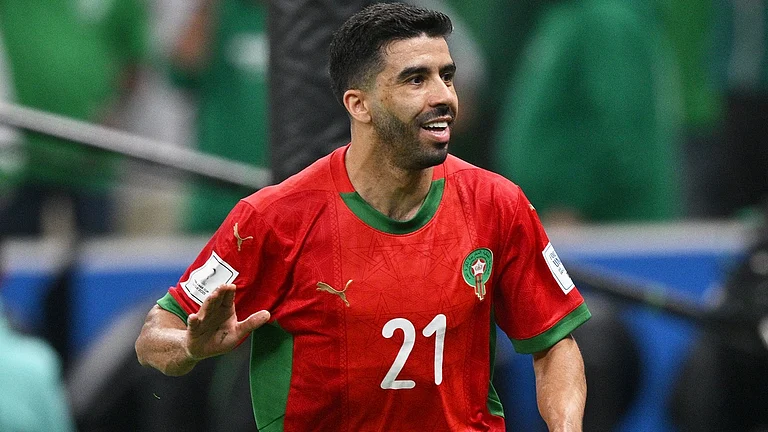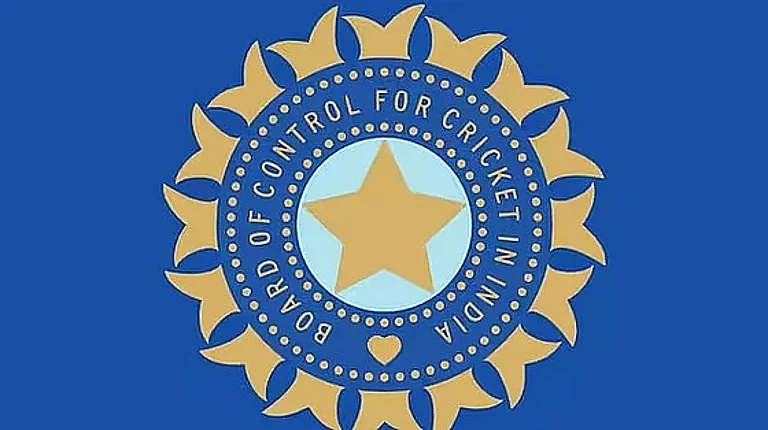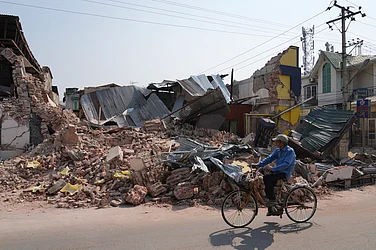The fifteenth BRICS summit being held in Johannesburg from 22-24 August will be the first in-person summit since the onset of the Covid-19 pandemic in 2019. South Africa hosted the last in-person summit in 2018.
BRICS had an acronymous origin. Eminent economist Terence James O’Neill, head of Global Economic Research at Goldman Sachs, first coined the acronym BRICs–Brazil, Russia, India and China–in a paper titled Building Better Global Economic BRICs published in 2001. He drew attention to the growing importance of the four and advised the G7 to induct BRIC representatives. The G7 ignored the advice. Two years later, another paper titled Dreaming with BRICs: The Path to 2050 argued that the BRICs countries could overtake the largest Western economies by 2039. The BRIC moniker was enthusiastically adopted in financial and economic circles as the projections were proved right with India growing at 6.89% and China at 10.35% from 2000 to 2009.
The four countries took note and their foreign ministers started meeting during the United Nations General Assembly sessions in New York. Their first stand-alone meeting was in 2009, followed by the first summit in Yekaterinburg in Russia the same year. The summits have been annual and South Africa joined in 2010.
What has BRICS achieved so far? The New Development Bank proposed by India in 2012 materialised in 2015 with its headquarters in Shanghai. Given China’s economic heft, it was inevitable that the bank would be set up there. China’s share in BRICS GDP has gone up from 47% in 2001 to 70% now. Similarly, in trade too, China’s share has gone up from 55% in 2001 to 69% in 2022.
Another important initiative is the Contingency Reserve Arrangement (CRA) for providing balance of payments support. Out of the total of $100 billion, China contributed $41 billion, India, Russia, and Brazil $18 each and South Africa, $5 billion.
China’s economic predominance in BRICS has a parallel in G7 where the US predominates. The share of the US G7 GDP has gone up from 40% in 1990 to 58% in 2022. It is fashionable to compare the G7 and BRICS, pointing out that at present the latter’s share of the global GDP at 31% exceeds the former’s at 30%. This reasoning is flawed. Any mechanical comparison of population and GDP between two groupings does not make sense unless the coherence of the grouping is also taken into consideration. The G7 has a convergence of interests that BRICS lacks.
In BRICS, at present, there is high convergence of interests between Russia and China. There is a high divergence of interests between India and China, to put it mildly. China wants a ‘unipolar’ Asia led by it and sees India as an obstacle in its way. India is engaged in getting closer and closer to the US without distancing itself too far from Russia and at the same time, taking care not to provoke China.
An important issue to be dealt with in Johannesburg is the growing number of applications to join BRICS. The host South Africa has correctly refrained from putting out a list of countries seeking membership. Roughly, about 20-odd have written and a similar number have shown interest. BRICS has a rule of unanimity about deciding on such matters. However, China’s economic predominance and the clout resulting from it need to be considered. It was China and not India that sponsored South Africa’s entry.
Saudi Arabia, Iran, UAE, Argentina, Indonesia, Egypt and Ethiopia are known to have sought membership. China is inclined to take in more members and so is Russia. India is rather hesitant and South Africa as chair will play a mediating game. Brazil may not like to be seen as preventing the entry of others from its region. It is not unlikely that the summit might take a decision coinciding with or as near as possible with the China-Russia stand. It is important for India not to be seen as standing in the way of expansion. Pakistan, too preoccupied with internal chaos does not seem to have applied. Over time, China will sponsor it.
The key question is: will too fast an expansion adversely affect the coherence of the group? The short answer is that there is not much coherence right now.
We should take note of an issue that will not be on the agenda–a common BRICS currency. Russian Foreign Minister Lavrov has said more than once that BRICS should think in terms of establishing a common currency to de-dollarise the international financial and trading system that currently permits Washington to impose economic sanctions with or without any justification. Russia’s deposits to the tune of $300 billion have been frozen by the West after the Russian invasion of Ukraine. Why Putin did not think of moving the deposits out remains a mystery.
Lavrov has got it wrong. How many years did it take the European Union to come up with a common currency? As we know, the UK did not adopt it. It is rather utopian to talk seriously of a BRICS currency. India has correctly distanced itself from the project.
In this context, it is worth noting that South African Ambassador Anil Sooklal was keen to put an end to any talk of a BRICS common currency. “There has never been any talk of a BRICS currency,” he said. James O’Neill has stated that the idea of a BRICS common currency is “ridiculous and absurd”. He is right.
However, the summit is likely to promote trading and settlement in national currencies. Brazil and Argentina have started using renminbi. In this context, we may note Russia’s concern with its huge rupee assets in Indian banks equal to $2 billion or more. India has paid the UAE in rupees for oil.
The summit will see 67 national leaders from non-members apart from 20 others including the Secretary General of the UN, the President of the Africa Union and the President of New Development Bank. The most notable absentee will be President Putin who wisely decided to send his foreign minister given the arrest warrant issued by the International Criminal Court, a warrant South Africa is legally bound to act upon. Incidentally, India is not obliged to act upon the court warrant and Putin is in no danger of being arrested in Delhi if he comes for the G-20 summit.
It is difficult not to note the difference in style between South Africa and India as hosts. South Africa has not chosen to project itself as the Vishwa Guru a la India! South Africa is focusing on economic dividends and, to a lesser extent, on political dividends. It wants BRICS to endorse and support the Africa Continental Free Trade Area.
(Ambassador K P Fabian is a retired IFS officer)






